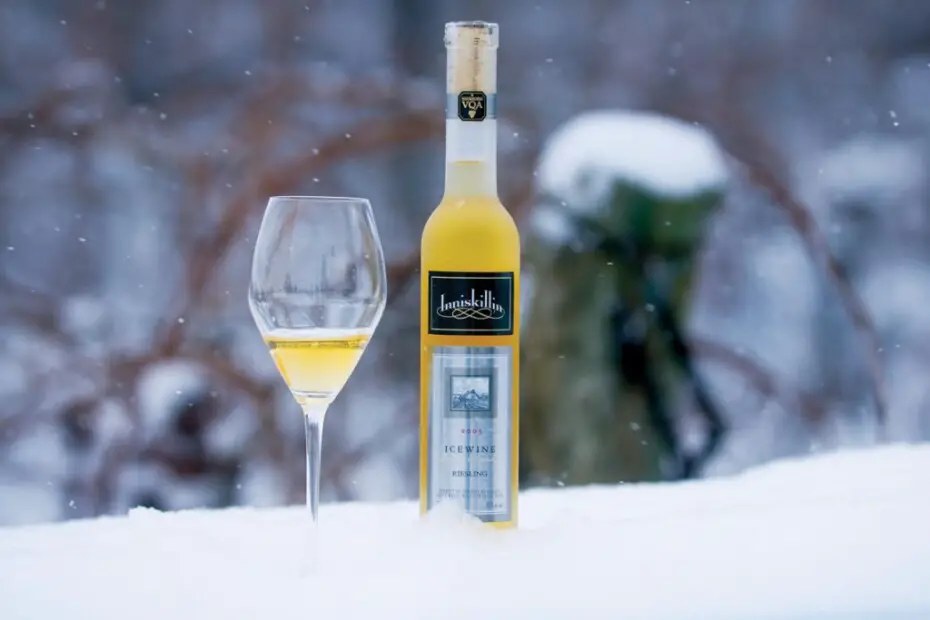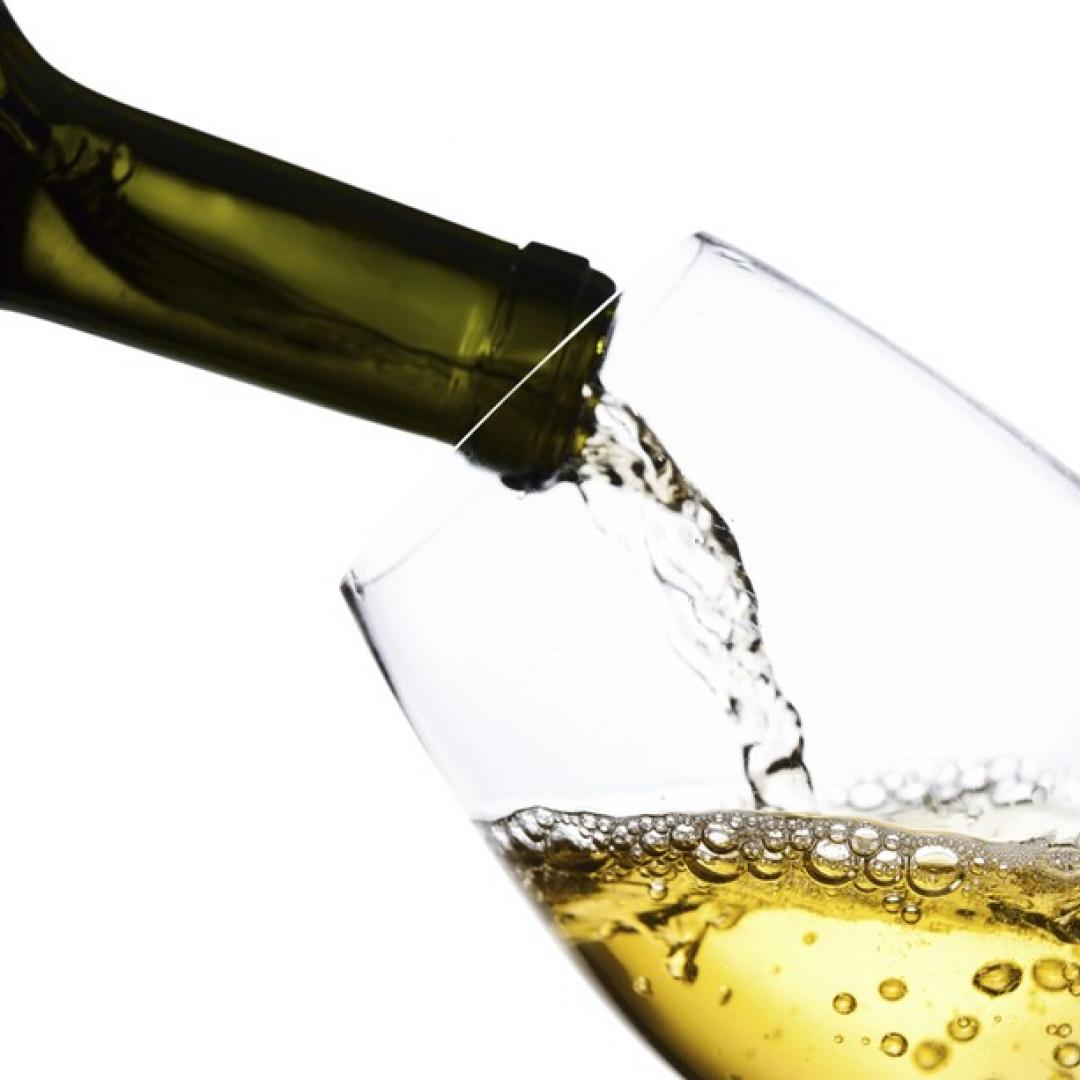would you like to know all about ice wine? A new trend is rising worldwide, it is nothing more and nothing less than ice wines, a peculiarity that little by little has been crossing barriers and has been positioning itself within the preferences of many.
But ice wine is not a new invention, since it is a beverage that has existed since 1794 and has been kept a little aside due to the boom that red, white and rosé wines have had since their beginnings.
Ice wine is the result of climatic conditions that cause the grapes to freeze and generate a fascinating broth that will surprise more than one unbeliever who surely thinks that it cannot be true that it exists. Knowing in depth about ice wine will allow us to understand a rarity of nature that has generated an exquisite broth capable of delighting the most demanding palates in terms of enology.
En esta nota, encontraras lo siguiente
what is ice wine?
Ice wine, also known as icewine or vin de glace, is a wine that comes directly from the frozen grapes resulting from the hard frosts in the areas where it is produced and under the strictest quality controls. They turn out to be tasty wines, with deep and sweet aromas, but soft and with an intense acidity, which is why many have considered it a miracle of nature.
Origin of ice wine
Everything seems to indicate that ice wine existed at the time of the Romans, and there are writings that reveal that Pinio the Elder and Martial speak of not starting the elaboration of wine until the vine was not frozen. 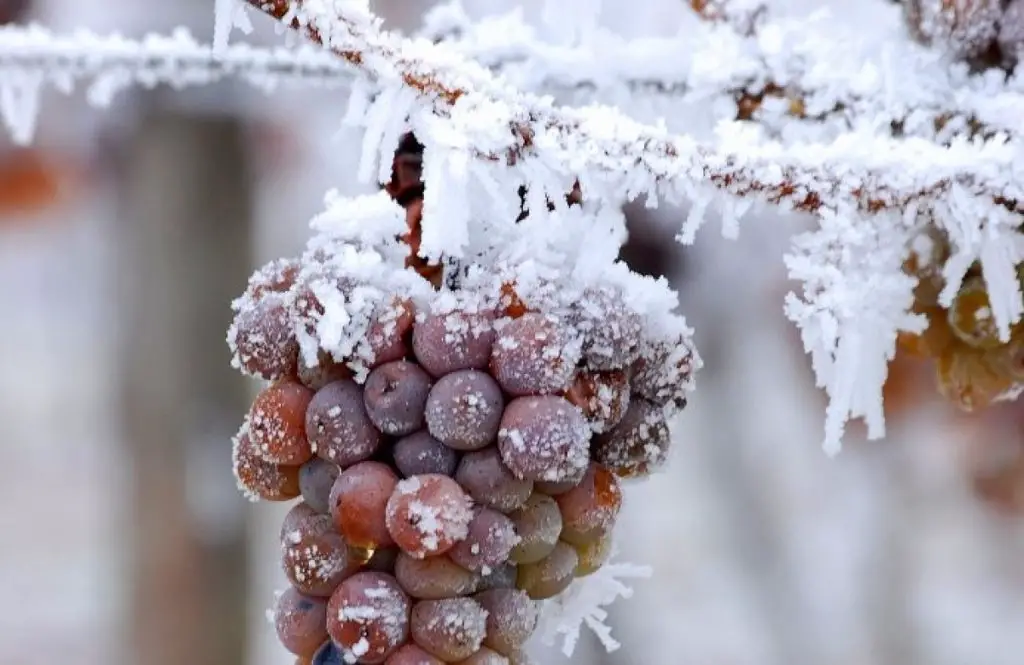 In 1794 in Germany, some winegrowers were surprised by the early arrival of winter and found that their grape harvest was frozen. A bit surprised and not knowing how to proceed, they took the risk and obtained a fascinating wine.
In 1794 in Germany, some winegrowers were surprised by the early arrival of winter and found that their grape harvest was frozen. A bit surprised and not knowing how to proceed, they took the risk and obtained a fascinating wine.
Thanks to the limited production and the appropriate climatology, the Eiswein, as ice wine is known in Germany, became a luxury wine to celebrate special occasions. Soon France was infected with this new fashion and enjoyed excellent harvests between 1846 and 1880, which led to the production of Vin de Glacier, but it was not until 1982 in Germany and 1983 in Canada that the Eiswein and Icewine category appeared.
Its development has not been easy, but with the arrival of new technologies it has been possible to advance in the production of this peculiar wine and different countries have been seduced by the elaboration of ice wines that are making their way in a very competitive market
which are the main ice wine producing countries?
Ice wine was initially only produced in Germany, but little by little it was crossing borders and countries such as Austria, Croatia, Czech Republic, Denmark, France, Hungary, Italy, Luxembourg, Poland, Romania, Moldavia, Slovakia, Slovenia, Spain, Sweden and Switzerland also produce this wine.
Eiswein is part of the Prädikatswein quality category in the German wine classification, while Vin de glace is part of the Luxembourg wine classification. Today Canada also produces its ice wine and over the years has become the largest producer of ice wines in the world, and so much is its passion for this type of wine that it is produced all over the country.
The United States and Japan also produce ice wine, so it is not only recognized in Europe, but other nations produce their own vintages and their own unique wines.
what grapes are used to make ice wine?
The most commonly used grape for the production of icewine is Riesling, however, some winemakers use other white and red varieties for the production of their icewine, for them the most important thing is its vinification, the variety can be any. 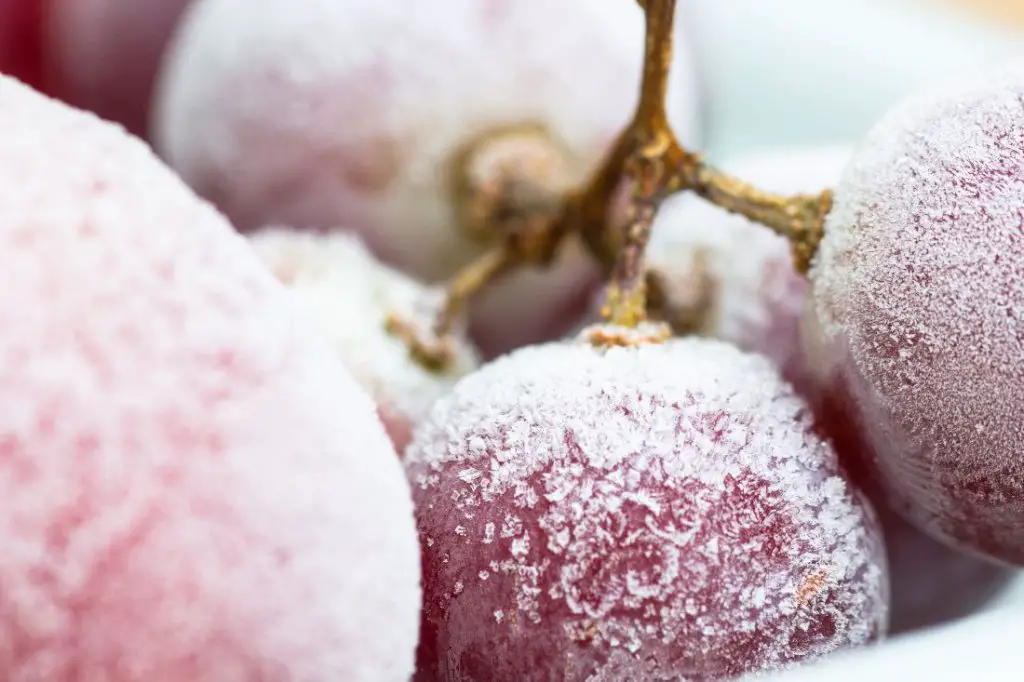 Among the grape varieties used in the world to make icewines we have: White varieties for making ice wine:
Among the grape varieties used in the world to make icewines we have: White varieties for making ice wine:
- Chardonnay
- Seyval Blanc
- Chenin Blanc
- Pinot Blanc
- Gewürztraminer
- Ehrenfelser
Red Varieties for making ice wine:
- Cabernet Franc
- Merlot
- Pinot Noir
- Cabernet Sauvignon
- Syrah
Ice wine elaboration process
The ice wine is a very particular broth, it stands out for being very sweet and with an unsurpassable quality, but in order to obtain a product with characteristics of this type it is necessary to know its elaboration method.
Harvest
As is to be expected, icewine begins with the grape harvest; however, in the case of icewine, this takes place at dawn and with the grapes frozen, making a very careful selection of the grapes. Then it is transported quickly, but with great care, to the place destined for its production, taking care not to thaw the vines.
Crushing
Like the other wines, the ice wine goes through the crushing phase, where the skin of the grape, known as skin, is broken and the greatest amount of must is extracted from the vine, avoiding breaking the seeds so as not to generate a bad taste.
Pressing
Pressing is carried out following the same dynamics as for the rest of the wines, but using a pneumatic press with a maximum pressure of 1.8 bar in a direct pressing and without destemming since the stems are completely dry.
The grape acts as a filter, so it will retain the water crystals, to obtain a more concentrated must. As the vines remain completely solid, a lot of destemming is carried out. Here it is important to control the temperature, because if we are not careful, the process can become very complicated and must be extended for a longer period of time, so the ideal temperature is around -3°C.
Fermentation
Unlike other wines, ice wine undergoes a long fermentation process that can last up to three months, with a static racking and a normal fermentation in which temperature is a conditioning and limiting factor. The high concentration of sugar and the cold conditions cause the fermentation to start immediately, so the must must must be tempered, otherwise the process cannot begin.
Yeast
The addition of yeasts is carried out by the winemaker, who will adapt the yeasts to the high presence of sugars. When the yeasts cease to act and there is almost no release of carbon dioxide gas, sulfite is added and the wine is racked, then left to settle and allowed to stabilize for four months in barrels.
Crianza
It is important to point out that due to the slow fermentation process, very thick lees are created, so that during the aging process, yeast and bakery aromas are obtained. At the end of the approximately four months of aging in barrels, the wine is microfiltered and bottled, which will allow us to have a 100% quality product on the table. When making ice wine, it is important to bear in mind the following:
- The varieties used for the same wine must come from the same region.
- The grapes should never be frozen by artificial methods; grapes that have been naturally frozen should be chosen.
- At the time of pressing, the grapes used must be frozen or on the vine.
- The grapes should be harvested and pressed at a temperature below -8º C.
- When making ice wine, it is not permitted to add additives to the wine, either before or after the grapes are pressed.
- The minimum natural sugar content will be 15%, but without a fixed maximum degree.
- The final wine shall have a minimum alcohol content of 5%.
Cryomaceration and cryoextraction
There are countries where grapes do not freeze naturally due to the climate of the place, so this artificial method is used, which allows the grape stock to be frozen artificially. Cryoextraction is the process by which the grapes are frozen with refrigeration and pressing, for which the grape growers expose the grapes to temperatures around -7 degrees Celsius, and press them while they are still frozen.
Organoleptic characteristics of ice wine
Ice wine is a very particular broth, so at the moment of tasting it we can find: Sight: Pale golden color that as it ages can acquire an amber hue. In the case of those elaborated with red grapes, it acquires a soft reddish tone.
Smell: It is presented as a wine with complex aromas with hints of bread. Palate: It is a very sweet wine, but with a very high acidity, which allows a perfect balance, making it fresh and not cloying with a long and persistent medium-bodied finish. 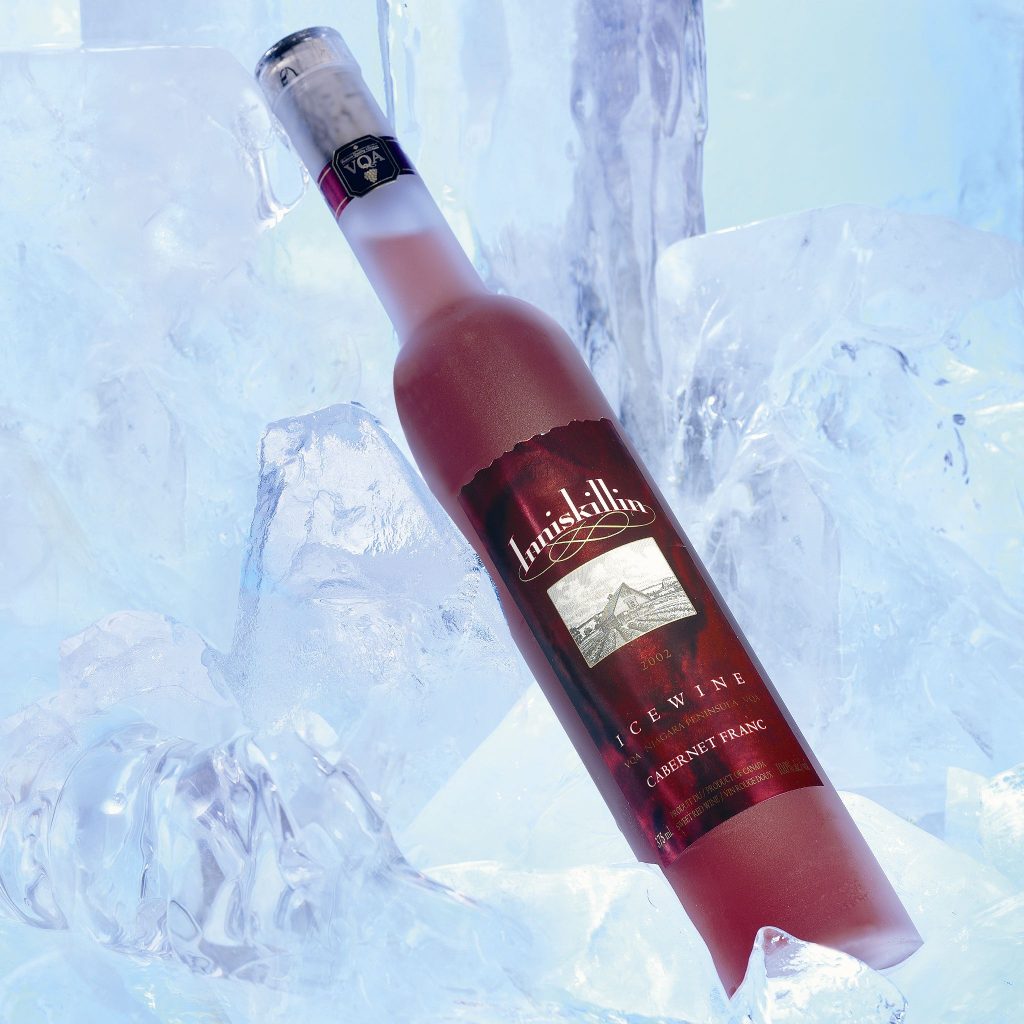
Pairing of ice wines
Thanks to its natural qualities ice wine is recommended to be served as a dessert wine or to be tasted after the meal, but it can also accompany some meals such as:
- Fruits: Especially those that are acidic, as when they come into contact with the natural sweetness of ice wine they achieve the perfect balance
- Foi: A perfect combination that balances fats
- Cheeses: Especially with strong cheeses such as Roquefort
at what temperature is ice wine served?
Ice wine is recommended to be served at a temperature of 10-12ºC and not at temperatures close to freezing because it would lose its quality due to the concentration of water in the form of ice and its destructuring, so it is necessary to be very careful.

